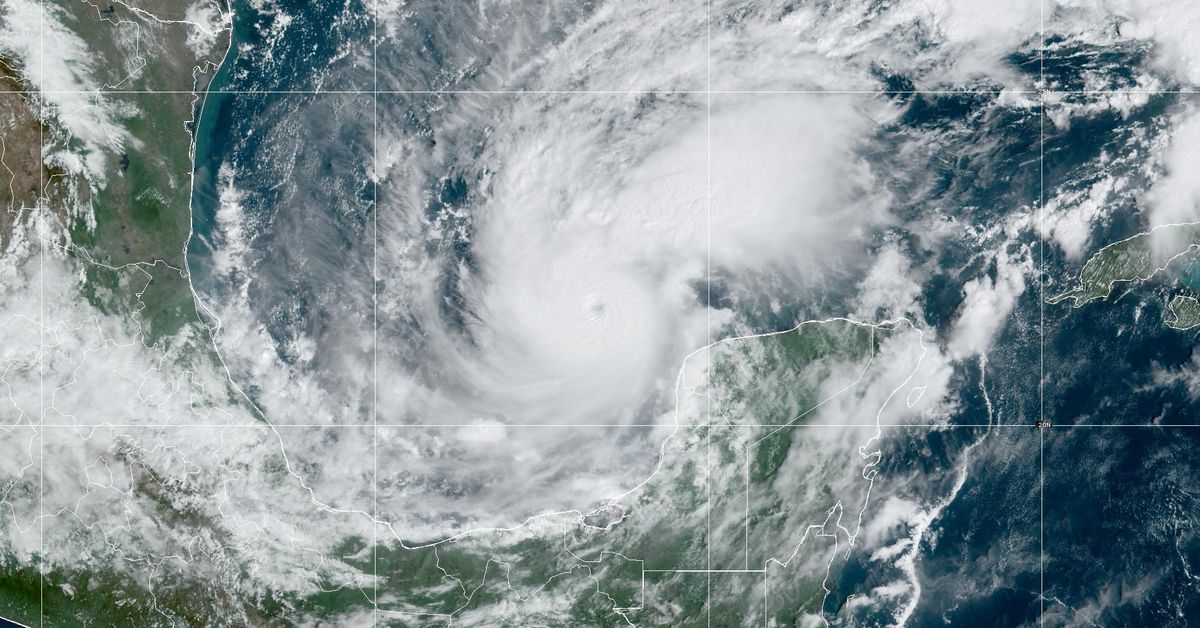A Category 5 Hurricane Forms in the Atlantic: A Growing Concern for Coastal Communities
The Atlantic hurricane season has seen its fair share of intense storms over the years, but Hurricane Milton has set a new record by rapidly intensifying into a Category 5 storm. This unprecedented storm is not only a testament to the increasing power of hurricanes but also a warning sign for coastal communities that are already reeling from the aftermath of Hurricane Helene.
Rapid Intensification: A Growing Concern
Hurricane Milton’s rapid intensification has been nothing short of remarkable. In just 24 hours, its sustained winds increased by an astonishing 80 knots (92 miles per hour), making it one of the fastest-intensifying storms in recorded history. This phenomenon is often referred to as "rapid intensification," and it poses a significant threat to coastal communities.
According to Dr. Karthik Balaguru, a climate scientist at the Pacific Northwest National Laboratory, rapid intensification is becoming an increasingly common occurrence due to climate change. "This is definitely off the charts," he said in an interview. "The threshold for rapid intensification is typically around 30 knots (35 miles per hour), but Milton has exceeded that by more than three times."
Only two other storms, Hurricane Wilma in 2005 and Hurricane Felix in 2007, have intensified at a faster rate than Milton. This suggests that the storm’s rapid intensification is not just a one-off event but rather a symptom of a larger trend.
The Impact of Climate Change
Climate change is playing a significant role in the increasing frequency and severity of hurricanes. Rising sea temperatures are providing more energy for storms to tap into, leading to more intense and rapid intensification. Additionally, climate change is altering wind patterns, making it easier for storms to strengthen.
Dr. Balaguru’s research has shown that the average hurricane intensification rate has increased significantly along the Atlantic Coast of the US since 1979. The probability of a tropical storm rapidly intensifying has also increased between 1982 and 2017.
"This has been happening," Dr. Balaguru said. "Whether it is the third most or the 10th most [rapidly intensifying storm], it shouldn’t matter. [Milton] fits this pattern of storms intensifying more rapidly with climate change."
The Perfect Storm Conditions
Hurricane Milton’s rapid intensification can be attributed to a combination of factors, including unusually warm waters in the Gulf of Mexico and low wind shear. Warm waters provide energy for storms to tap into, while low wind shear allows them to strengthen without being torn apart.
According to Dr. Balaguru, climate change is setting up the perfect conditions for rapidly intensifying storms: "It’s setting up the perfect storm – warm waters, lower wind shear, and more moisture in the atmosphere."
A Growing Threat to Coastal Communities
Hurricane Milton’s projected path takes it towards the west coast of Florida, where many residents are still recovering from the aftermath of Hurricane Helene. The storm surge could cause up to six feet of flooding along parts of the northern coast of Mexico’s Yucatan Peninsula.
Florida’s Tampa Bay is also at risk, with a potential 12-foot storm surge that could be catastrophic. While it’s possible that Milton may weaken before making landfall due to stronger wind shear, its projected track suggests that it will still bring life-threatening hazards to the region.
Conclusion
The formation of Hurricane Milton serves as a stark reminder of the growing threat posed by rapidly intensifying storms. As climate change continues to shape our planet, we can expect more intense and frequent hurricanes in the future.
It’s essential for coastal communities to be prepared for the worst-case scenario and to take proactive measures to mitigate the impact of these storms. By staying informed and taking necessary precautions, we can reduce the risk of damage and loss of life.
In conclusion, Hurricane Milton is a Category 5 storm that poses a significant threat to coastal communities. Its rapid intensification is a symptom of climate change, which is altering wind patterns, sea temperatures, and atmospheric conditions.
As we continue to navigate the complexities of climate change, it’s crucial that we prioritize the safety and resilience of our coastal communities. By working together, we can build a more sustainable future for all.

